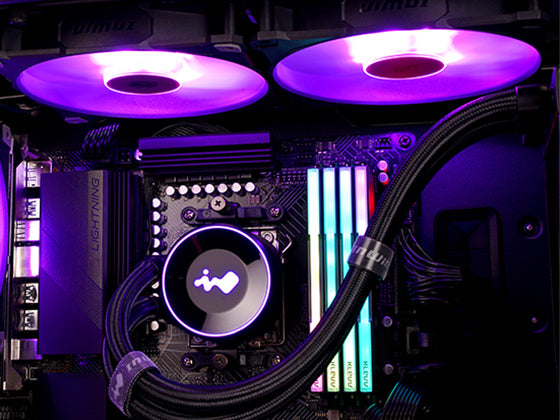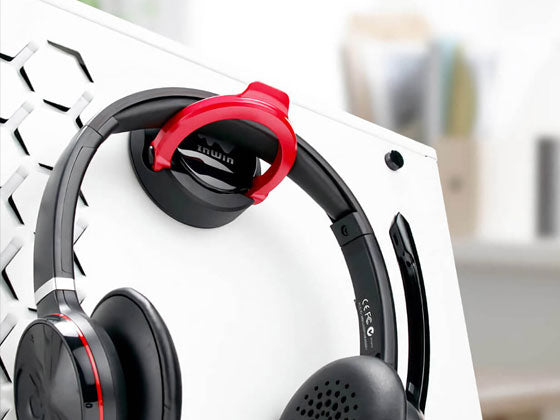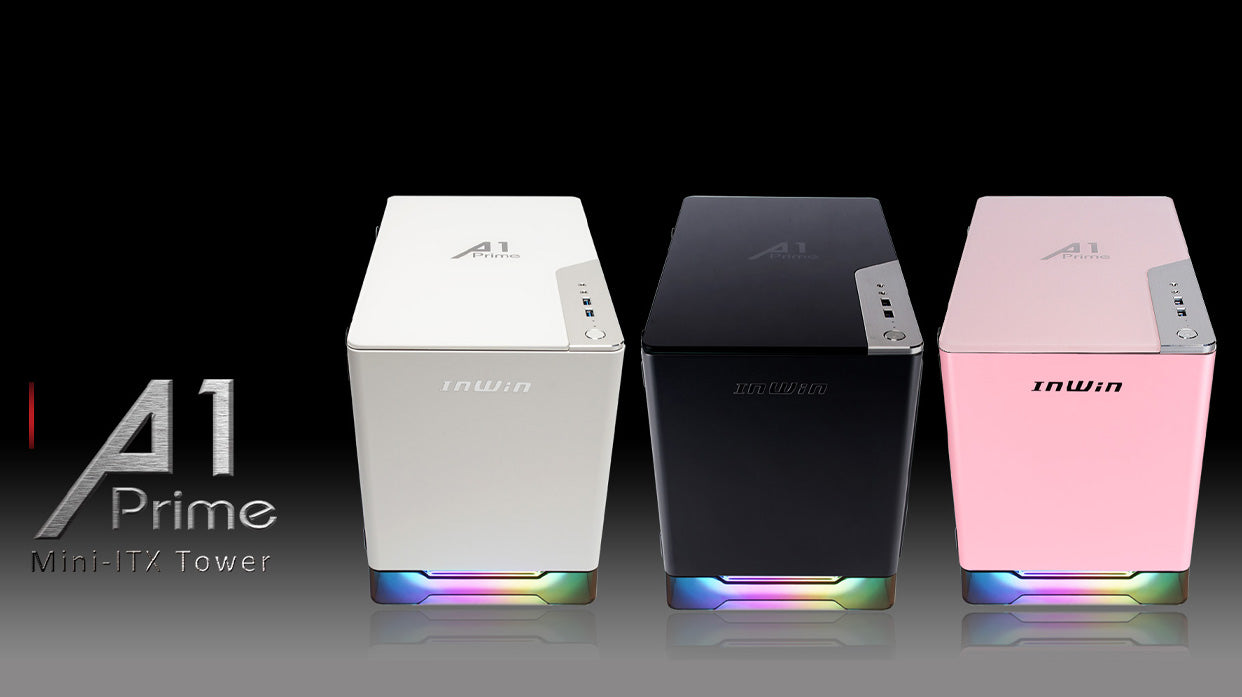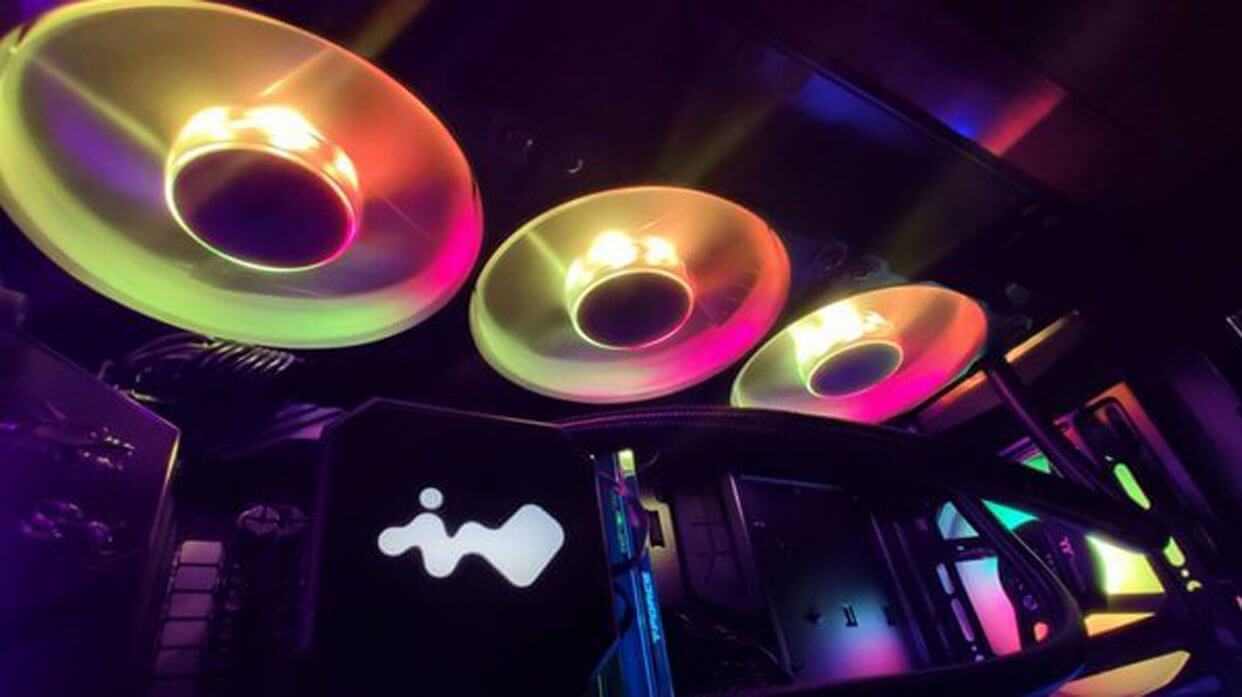Website: http://www.xtremesystems.org/forums/showthread.php?297391-InWin-A1-Prime&p=5271660#post5271660
Introduction
The Mini-ITX PC needs more love – It’s more than a PC, it’s an ornament and a marvel to some point that computers can pack the same punches as their bigger counterparts. Maybe one of the reasons why it doesn’t receive that much love is that there’s really a few options for the case and motherboard, but I think the stigma of the “small pc” has a lot more to do with it. We have the thinking of high temperatures, huge differences in performance, fears of building, and even the cost of such systems. InWin has created the A1 to knock out all stigmas – from high temps to the cost of a mini-ITX system. The A1 was built to welcome all the builders who shunned away from the small form factor builds. When In Win first introduced the A1 I immediately fell in love with it. Unfortunately I was not able to take a look at the original A1, but InWin has recently released the A1 Prime, which bring some minor upgrades with it. For those who don’t know, the A1 Prime is an updated version to InWin’s popular A1, a mini ITX case first showcased at CES 2017. The final iteration of the A1 appeared at CES 2018 with an acrylic top, a four-watt qi charger, and a non-modular 80 Plus Bronze certified 600-watt power supply that was to be included with the purchase of the case. During CES 2019, InWin introduced its revision to the A1, the A1 Plus. The A1 Plus shares the same frame and dimensions as its predecessor and loses the four-watt qi charger for an improved ten-watt 1.2 certified qi charger. InWin also upgraded the included power supply to a non-modular 80 Plus Gold certified 650-watt PSU. Finally, InWin decided to include two of their newest 120mm fans: the Sirius Loop ASL 120 RGB. In A1 Prime, the power supply unit has been upgraded to a high-performance one with a power supply capacity of 750W with 80 PLUS Gold certification. By strengthening the power supply capacity, it is easier to incorporate a more powerful CPU and GPU.Instead, the Qi charging function is omitted. The basic specifications of In Win A1 Prime are the same from the unbranded version, but as a change (common with Plus), the LED illumination on the bottom of the PC case has been changed to addressable RGB LED. Two case fans with addressable LED illumination are included.


The A1 Prime comes in three colors, white,black and pink. The A1 Prime black version comes with two Sirius Loop addressable RGB fans, while the white version comes with two Sirius Pure addressable RGB fans.

Specifications:



Packaging & Contents
The A1 Prime is delivered in a standard cardboard box with little to no graphical elements present. The front and back sides of the packaging are identical in design, having only the A1 Prime logo printed alongside the In Win logo and name.


The sides of the box have the complete technical specifications of the case. And monochrome diagrams of the main features of the A1 Prime.


Two sturdy Styrofoam spacers on the ends of the case hold it in place and protect it from damage during transport. On top of that, a black cloth bag keeps scratches and fingerprints away.

Along with the chassis and inside the cardboard box, there is a plastic bag with all the documentation and hardware necessary for the installation of the components. You will not receive only the usual set of screws and zip ties, but In Win also includes a graphic card holder, card with a QR code to download the InWin A1 Prime user manual and a SATA to 4-pin LED connector should your motherboard not come with one. Lastly, there are four small rubber strips you need to place on the underside of the chassis.

A Closer Look Outside
The A1 Prime is a sleek-looking, compact case. We did not expect anything else from InWin as they are known for beauty and design. The material mix is excellent with the use of thick steel, brushed aluminum and glass on the side. The base is made out of clear plastic and actually houses an LED lighting element. Its frame measured 273 millimeters (or mm) in height, by 224mm in width, by 357mm in depth. This made the case large enough for a CPU cooler of up to 160mm in height, and a GPU clearance of up to 320mm. The A1 Prime despite it’s “menacing” size, is actually pretty heavy at 7.1 kg – It brought the weight of the usual Inwin chassis, and it’s not from the tempered glass panel.

The InWin A1 Prime has a tempered tinted glass side panel to showcase the in-game build parts. The panel is secured using two convenient latches that you need to pull towards yourself in case of panel removal and drown with a little force during panel installation.




The corners of the case of the InWin A1 Prime are rounded, which makes its appearance even more harmonious and elegant. The edges of the glass panel are so perfectly processed that no claims can be made here.

On the other side of the InWin A1 Prime there is a metal panel, on the surface of which there are perforations in the form of hexagonal shapes. It looks very interesting and unusual. And most importantly, it helps to ventilate the interior, because it is behind these hexagonal holes that the case fan, included in the InWin A1 Prime package, is located. Vents made by three-dimensional molding, which are often used in In Win PC cases. The panel dimensions for both left and right were W310xH200mm.



The front panel of the InWin A1 Prime is designed in accordance with the concept of minimalism. No control buttons or connectors, just the manufacturer's name with a chrome finish. Looks very stylish, especially in good lighting. The base of the InWin A1 Prime has small cutouts on the front and back for air intake.

In the upper right corner of the InWin A1 Prime there is a small aluminum panel that houses the power button, a pair of USB 3.0 connectors, a pair of audio jacks for a headset, and a pair of LEDs signaling the operating status and activity of the system. A special highlight of the InWin A1 Prime is the top panel made of tempered tinted glass.

There is no visible PSU bay in the rear, which means the unit is embedded somewhere within the compact chassis. You may install a 120 mm fan here or even go for a liquid-cooling assembly of the same size if you like. There are two expansion slots even though a Mini-ITX board only comes with one. This ensures your dual-slot GPUs will fit, so you may make this a quite potent gaming rig. In Win has also placed a central power connector on the bottom. The rear wall of the InWin A1 Prime is equipped with a 120 mm fan for blowing out heated air.

The case rests on a translucent plastic frame with an addressable RGB backlight embedded in its body. The backlight can be controlled and synchronized with other components using ASUS Aura Sync technology, Gigabyte RGB Fusion, ASRock PolyChrome Sync or MSI Mystic Light Sync.

The base of the InWin A1 Prime can accommodate two 120mm fans. Their installation is optional, but desirable in case of using a discrete gaming video card. To minimize dust build-up on the case, a fine mesh filter is glued to the base of the InWin A1 Prime. Unfortunately, this dust filter is non removable, as it is glued on the plastic base.



A Closer Look Inside
The inner structure of the InWin A1 Prime is no less interesting than the exterior of the case. To access the interior, simply remove the two push pins and pull off the covers. The metal panel is secured with two thumb screws.

Opening the back of the case with the hexagonal ventilation holes, you can see the 120mm fan for blowing out the heated air.

The most interesting thing is in the main compartment of the InWin A1 Prime. The InWin A1 Prime case comes with a pair of Sirius Loop ASL120 fans and a 750W InWin power supply.

With the power supply pre-installed a big portion of the build is taken care of before the case is even out of the box. The advantages of including the PSU are ease-of-installation and avoiding compatibility issues with larger PSUs.

The motherboard area is pretty straightforward with integrated motherboard standoffs, but comes with a large opening that is only covered by SSD trays, so you should even be able to access the backside of the CPU area with everything assembled. You can't expect a through hole with a wide opening like a middle tower PC case, but you have to secure the minimum number of holes that go back and forth between the front and back of the motherboard tray. There is a convenient through hole near the SATA port and CPU auxiliary power connector for easy wiring.

Looking at the floor, it is apparent where the two floor-based fans come in handy. If you install a fully sized GPU, these cooling units push cool air right on to the GPU heatsink fans, which will certainly help keep temperatures down. The installation of a 240, radiator inside or above the base of the cooler, is not possible. This is due to the position of the graphics card, which will interfere with any radiator and fan configuration.

All the leads within the A1 Prime are pretty generic and black, and of the usual plugs, so you should have no issues getting everything hooked up. The interface panel of the InWin A1 Prime case is connected using three cables: HD_Audio pads, pads with contacts Power SW, Power LED and HDD LED, USB 3.0 connector. Also at the bottom of the case you can find a cable for connecting the RGB lighting built into the base of the InWin A1 Plus. It is a + 5V RGB connector with a continuation for connecting the next backlight element.




The plastic PSU shroud with the InWin brand logo does not only serve a cosmetic purpose by hiding the power supply itself from view, but also allows you to route cables and hide those as well. This plastic panel can be easily removed if it gets in the way when assembling the gaming system. It is secured with a stop and one screw.



By removing the bezel, you can see the model of the power supply you are using. This is InWin P75F 750W 80 Plus Gold Certified Power Supply. It is designed specifically for the InWin A1 Prime case, since one of the cables from the PSU immediately goes to the wireless charging module. It is quite compact but potent enough to really power anything you can throw inside the A1. The entire appearance is sprayed with black matte, and the appearance is also two polygonal designs. The visual sense is more beautiful, unlike the general boxy shape. It's rigid! In the configuration of the wire, you can see that this INWIN P75F power supply uses a fixed circuit instead of a modular design, which can also greatly reduce the cost, and the actual return is in the price.


Detailed specifications are also posted on it, allowing users to better understand the performance of this P75F.

A 120 mm fan is used to cool the power supply unit, which does not emit much noise during system operation. The sleeve bearing fan is by Poweryear with model PY-1225M12S.


The built-in power supply unit in the InWin A1 Prime has the following cables for connecting the system:
one 24-pin connector (20 + 4) with a 500 mm cable for the motherboard.
one 8-pin (4 + 4) connector with a 600 mm cable for additional
power supply to the processor.
two 8-pin connectors (6 + 2) with a 500 mm + 150 mm cable for powering the video card.
two SATA connectors with a 400mm + 150mm + 150mm cable for drives and peripherals.
one molex connector with a
400mm + 150mm + 150mm cable for drives and peripherals.

InWin P75F is designed with a single +12V output and DC-DC circuit design , and a single +12V output design can provide a strong, stable and reliable power supply for high-power system components. And the DC-DC circuit design can maintain excellent conversion efficiency for 5V and 3.3V voltage, and effectively improve system stability.


Bulk capacitors are produced by Teapo, a large Taiwanese manufacturer, with specifications of 400V 560uF.


Let's take a closer look at the back of the InWin A1 Prime case. It can be seen that in this part of the case there is a small margin of free space for storing cables, as well as two slots for 2.5 "drives. This means you can install a total of four fans within the A1 Prime, which is pretty impressive considering the overall size of the chassis.

Brackets for 2.5 "devices are attached to the wall of the case with a thumb screw, which makes it convenient and easy to add drives to the system.

The space for routing the cables is approximately 25mm at the back of the chassis. The front of the case is unavailable for cable routing as the space is occupied by the included 120mm fan and the power supply. There are plenty of tie-down points on the motherboard tray, and enough spaces to pass the cables to the CPU power connector and inside the system.

A 120mm liquid bearing cooling fan is used on the back. This means you can install a total of four fans within the A1 Prime, which is pretty impressive considering the overall size of the chassis. It has a smart temperature control design, which can be both heat and quiet. Get the best balance without annoying fan noise.

Sirius Loop ASL120 fans are interesting in that they have addressable ring backlighting. This allows you to create a beautiful build based on the InWin A1 Prime without having to add or replace turntables with others. To connect, two cables are used with the continuation of the + 5V RGB and 4-pin PWM connectors, so that you can connect devices in series and use a minimum of connectors on the motherboard.


The casing of Sirius Loop ASL120 fans is equipped with anti-vibration silicone gaskets, a sleeve bearing is used in the rotation mechanism. Sirius Loop ASL120 turntables are designed for 30,000 hours of uninterrupted operation. The minimum and maximum fan speeds are 500 and 1800 rpm, respectively.


Installation Process
Before you starting installing your hardware you are going to want to think out your build. If you forget to connect something you are likely going to have to start all over. Installing the motherboard is naturally quite the tight affair, but thanks to the integrated motherboard standoffs, nice and short cables of the PSU and I/O, things are not as cluttered as they could be. The mounting space of the motherboard is about half the depth of the housing. You can see the hole for inserting the driver in the upper left corner.

Even though the A1 Prime is extremely small, you are still able to use an air cooler of up to 160 mm in size. In the case of a CPU Cooler that uses a back plate, the opening on the back of the CPU Socket that corresponds to the CPU Cooler maintenance hole is narrow, so many products can not be fixed with the motherboard attached.

The final choice was an all-in-one water cooling unit with a 120mm size radiator.

I removed the motherboard once to use the back plate, but since the height of the pump-integrated water block is low, there is no worry of causing internal interference.

The maximum effective space for the expansion card of A1 Prime is 320 mm. For verification, we prepared a 2-slot occupancy model with a length of 280 mm.

The PCIe auxiliary power cable connection is complete. It can be seen that sufficient empty space is secured in the forward direction. By the way, it supports up to 55mm in thickness.

The GPU is installed traditionally. Even if you add several fans, none of them will reduce any of the compatibility. The graphics card has plenty of living space, and you can use the full depth from the front to the rear. Since it is mounted parallel to the bottom, there are no obstacles and it was the easiest to work with among the component parts.

The next thing to install is our solid state drives. As I mentioned the trays easily can be removed from the case to mount your drives. Then you simply just reinstall the trays. One thing to note though is that the A1 Prime can only take 2.5" drives—there is no space for the larger 3.5" units.

A nice feature of the InWin A1 Prime is that it allows you to sling excess cables from the main compartment and hide them behind the case cover. Using the cable ties supplied with the InWin A1 Prime, I was able to tidy up the cables. Allowing for the possibility of installing a SATA drive in the future, I left the ends of the SATA interface and power cables in the immediate vicinity of the upper cage. I placed the RGB backlight control panel on the inner wall of the front panel. In my opinion, this is the most ideal place where you can easily reach with your hand, and at the same time the remote control does not interfere with other components of the assembly. With everything installed, things are tight, but that is a necessity with a case of this size. The interesting part is how clean you can keep things with just a little effort. In Win has done an excellent job in that regard, and this is even more apparent if you look at the 120 mm fan mount on the side: it is completely unobstructed.

The LED illumination of the base of the InWin A1 Prime case and its two Sirius Loop ASL120 fans is controlled via a + 5V RGB channel using the control panel supplied with the case. Also, the InWin A1 Prime backlight can be connected to the corresponding connector on the motherboard, if such a connector is present. I assigned the backlight to the remote control to control the case's RGB backlight from a button. Fortunately, the InWin A1 Prime has plenty of backlighting modes. This is an overflow of all the colors of the rainbow, and a circular movement of the same color, and a static choice of color, and "breathing". Some of the backlighting options for the InWin A1 Prime are shown in the selection of photos below. The backlight itself is bright and rich, especially at the base of the case. With this design, the InWin A1 Prime case turns out to be a real decoration of your work or play place.

Sirius Loop ASL120 fans with addressable lighting ring perfectly accentuate themselves inside the InWin A1 Prime case.

Once turned on, the InWin A1 Prime emits a cool glow through the clear base, while a tiny blue power LED also lights up.



Performance
Not limited to the RGB component of the InWin A1 Prime, I also tested how the assembly components inside the case would feel under load. To put this case through its cooling paces we will be using a test system consisting of an Intel Core i5-10600, RTX 2080 Super and an SSD. This system allows us to produce a substantial amount of heat and effectively test the A1 Prime‘s cooling capabilities. For stress testing we use AIDA64 to create the maximum amount of load our CPU and GPU are ever likely to see. Noise levels are recorded with a calibrated REED Instruments R8050 Sound Level Meter, Type 2. It is placed at chassis height on a Manfrotto Tripod. Measurements are taken from a 45° angle towards the case, at a distance of 10 cm to the closest edge of the chassis.
Test System:
Processor: Intel Core i5-10600 (6 cores/12 threads, Max Turbo 4.8GHz)
Motherboard: Gigabyte Z490I Aorus Ultra
CPU Cooler: ASUS ROG STRIX LC 120
Memory: 32GB Corsair Vengeance LPX DDR4-3600MHz
SSD: 1TB WD Blue M.2 NVMe
Graphics
card: Sapphire Radeon RX 6800 XT
Power supply: Seasonic Focus SGX-650
OS: Windows 10
We are confident your graphics card will run at a lovely, low temperature but when it comes to your CPU you have to factor in both your choice of CPU and CPU cooler. We simply do not like the idea of running a Ryzen 9 3950X or Core i9-10900K with a 120mm AIO cooler so for this review we wimped out and chose a Core i5-10600 which ran icy cold. Of course, I got component temperatures higher than if this set of components were installed in a spacious ATX case with many fans, but I still consider the heating results in the InWin A1 Plus case acceptable. The maximum temperature of each of the most important components of the gaming assembly was 53-73 degrees Celsius, which is definitely a success for a Mini-ITX case.

We are impressed with this result and we know that you can build a fairly quiet, but powerful system into this chassis with a minimum of hassle.

Final Thoughts
InWin A1 Prime is not just compactness and minimalism, but the very case when the practical is combined with the stylish. Due to the convenient and well-thought-out design of the case, assembling a gaming system in it does not require much effort. InWin A1 Prime does not impose large restrictions on the dimensions of the video card and processor cooling. An 120mm water-cooled radiator can be equipped on the back. At the same time, the appearance of InWin A1 Prime, when such a gaming PC is on the table and plays with all the RGB backlight colors, only pleases the eye and cheers up. The underglow of the case is overwhelming to the point that it gives the impression that the case is floating on thin air – The RGB plug of the LED also has a splitter to avoid problems if you want to use the RGB header of your case to sync with other components. The number of fans that can be installed is 120 mm x 1 on the side, 120 mm x 1 on the back, and 120 mm x 2 on the bottom. This allows users to quickly adjust the cooling capacity, if required. As standard, two addressable RGB compatible 120mm fans "Sirius Pure ASL120" are installed on the side and back. Thermal performance seems impressive too. Using either a large air cooler or an All-In-One liquid cooler, the A1 Prime keeps the system temperature well under control. One inconvenient of this case is the non-removable dust filter that is glued to the base of the case. At this price point, a removable dust filter should have been included, as well as more filtering on the rear and side of the chassis. The A1 Prime can't support big powerful builds with large radiators and lots of storage. Without understanding the details, it may seem to someone that InWin A1 Prime for 243.99€ is expensive. But here you should not lose sight of several important points at once. If you look at the market for compact power supplies with a capacity of 750 W and above with a 80 Plus Gold certificate, you can see that the price tag for such power supplies starts from 120€. And such a power supply is already included in the InWin A1 Prime. With the power supply pre-installed a big portion of the build is taken care of before the case is even out of the box. The advantages of including the PSU are ease-of-installation and avoiding compatibility issues with larger PSUs. Also included in this case are two 120 mm Sirius Loop ASL120 fans with addressable RGB backlighting, which adds another 30€ to the cost. Add to this the cool illumination of the base, tempered tinted glass panels, bombastic appearance, and it turns out that the cost of InWin A1 Prime is fully justified and more than justified.

The InWin A1 Prime is a beautiful-looking, compact chassis, that is surprisingly easy to work with, offering an excellent balance when it comes to hardware compatibility while including some nice additional features for a potent, high-performance rig without the frustrations that usually come with an enclosure of this size. The case is a solid choice for first time Mini-ITX builders and even veterans looking to add an extra build on their log.








